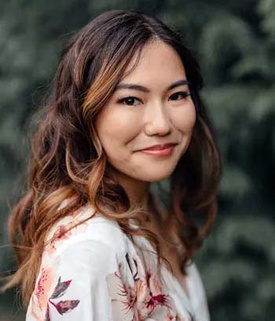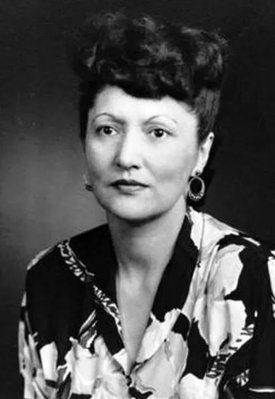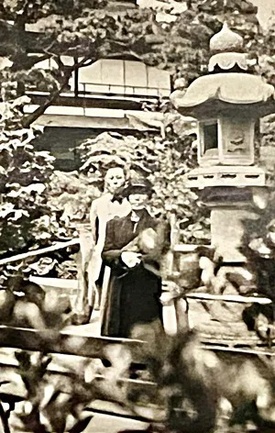
Mercedes Luna has come full circle, returning to work for the Wing Luke Museum of the Asian Pacific American Experience, which she visited as a child with her father. Her example shows how a young person can proudly embrace and thrive in a rich cultural heritage.
* * * * *
Let’s learn a bit about your heritage — your maternal side is Japanese and your paternal side is primarily Filipino and Native American.
Yes, I am fourth-generation Japanese American (Yonsei) on my mother’s side and Filipino and Native American on my father’s side. My maternal family history, according to Japanese temple records in Kobatake, Hiroshima, state that we are related to the Imperial line dating back to the 5th century BC. Through my mother’s paternal line, I am descended from Tsudo Sabuo Michisugi, the great-grandson of Emperor Nijo, Japan’s 78th emperor who ruled from 1158-1165. So I have Imperial roots!

Every summer, another branch of my mother’s maternal family holds a huge family reunion in California where most of my extended family lives. My Shima-Inouye family just held its 47th family reunion in San Diego this summer. These reunions honor our ancestor George Shima, who in 1908 founded the Japanese Association of America (Nihonjin-kai), the first Japanese American community organization involved in civil rights.
At first, Shima could not afford to buy developed land so he drained swampland, invented farming equipment, grew potatoes and other produce. Eventually, he became the first Japanese American millionaire.
Yet he always preferred to call himself “just a simple farmer.”
My grandfather, Robert Yamauchi, was born in rural Washington State, and at the early age of six, he knew he wanted to be a physician.
As a young adult, he served in the decorated Japanese American 442nd Regiment. Fortunately, after WWII, he was able to study medicine and become one of the first JA graduates of the University of Washington (UW) Medical School. During the war, my maternal grandmother’s family was incarcerated in Rohwer, Arkansas.
At that time, only one woman, one Jewish person, and one non-white male were allowed into each UW medical class. By chance, my grandfather met my grandmother, Kazuko Inouye, in an elevator at Seattle’s Virginia Mason Hospital, where they both were doing internships. Kazuko was a dietician, college professor, and freelance wellness writer for British Vogue. She also advocated for healthier organic foods by serving on policy committees with the American Dietetic Association. She raised four children, including my mother Deni, in Spokane, Washington.
My paternal grandparents were Indipino (Filipino and Tlingit Indian). My indigenous heritage begins with a maternal line of strong women. My great grandmother was Matilda Peters and my grandmother was Corinne Leach; both were formidable, generous women. Matilda moved to Seattle from Alaska in 1924. She met her first husband, a Chinese immigrant named Quon Fou Jeun, while he was working in Southeast Alaska. A few years later, she met and married my paternal great-grandfather, Felipe Monzon, had my grandmother, Corinne Monzon and eventually raised seven children in Seattle.
They both started the Seattle American Indian Women’s Service League in 1958. In the 1960s, they established the Seattle Indian Center, one of the earliest urban Indian service centers in the U.S.

Proudly, I am an enrolled member of the Tlingit tribe and am of the Raven moiety (tribal lineage). My ancestors fought for justice. My great, great aunt, Elizabeth Peratrovich, is known in the Smithsonian Institutes’ National American Indian Museum as the “Native American Martin Luther King, Jr.” She and her husband, Roy, were instrumental in securing equal rights in Alaska in 1945, nearly 20 years before the US Congress passed the Civil Rights Act of 1964.
My Indian name, Kin Too, is an honor to bear. When I was still in the womb, Kin Too, the Tlingit matriarch, felt guided to gift me with her own name. Kin Too means “always striving” and I am proud to be among the first of four young women given the name Kin Too.

Due to housing restrictions and redlining practices, all Natives moving to Seattle were forced to live in Seattle’s International District. The very first place my grandmother and great grandmother lived was right across the street from my current office, where the Szechuan Noodle Bowl is, a frequent stop for me.
My Filipino paternal great-grandfather, Felipe Monzon and grandfather Luis Luna immigrated from Cavite, Philippines, through enlisting in the US Navy. The very first home my dad lived in was just three blocks from the Szechuan Noodle Bowl location.
All photos are courtesy of Mercedes Luna.
*This article was originally published in the North American Post on November 25, 2022.
© 2022 Elaine Ikoma Ko / The North American Post







